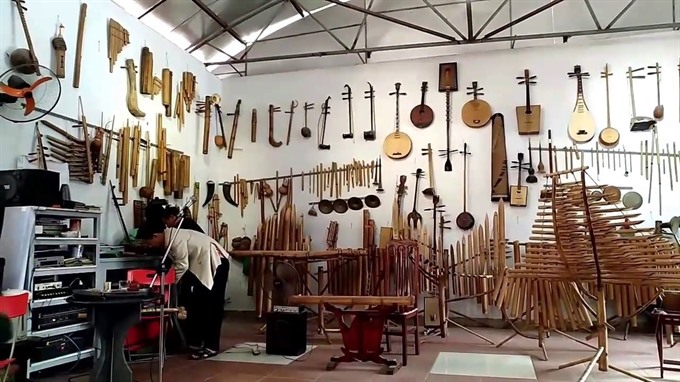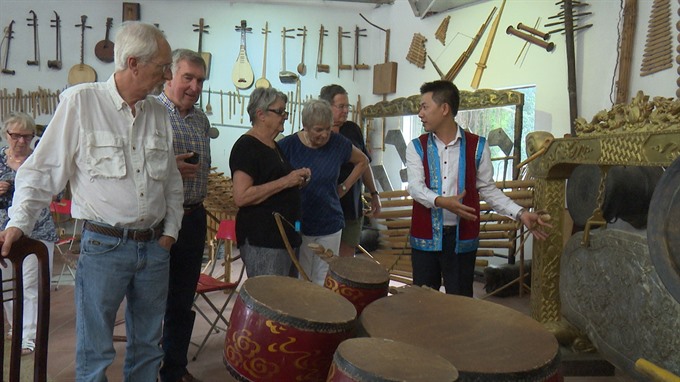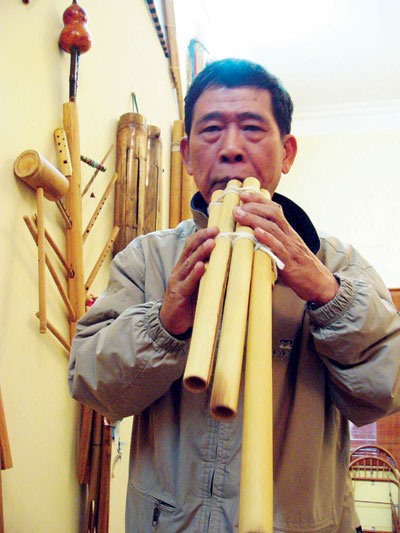 Life & Style
Life & Style

A musician in the northern province of Phú Thọ is running a permanent exhibition of his own music instrument collection at his home. His house has become a tourism destination for visitors to Thanh Thủy District.
 |
| For future generations: With more than 200 folk instruments on display, Nhạc Đường Bá Phổ (Bá Phổ’s Music House) hosts performances and lessons for anyone who wants to understand the history of the instruments and the way to use them. — Photo i.ytimg.com |
PHÚ THỌ — A musician in the northern province of Phú Thọ is running a permanent exhibition of his own music instruments collection at his home. His house has become a tourism destination for visitors to Thanh Thủy District.
With more than 200 folk instruments on display, Nhạc Đường Bá Phổ (Bá Phổ’s Music House) hosts performances and lessons for anyone who wants to understand the history of the instruments and the way to use them.
The 30sq.m. room houses popular instruments such as bronze drums, đàn bầu (monochord), đàn nguyệt (double-stringed lute) and đàn t’rưng (bamboo xylophone), as well as đàn nhị (two-chord fiddle) and đàn tranh (16-string zither), as well as rarer instruments such as đàn lứu of from northern plains, đàn cò ke and sáo Mông of the northwestern region, stone instruments of the Mơ Nông group and stone instruments of the Ê Đê group.
Phổ talks passionately about the instruments and spends hours showing visitors how to play the instruments, free of charge.
“Each instrument has its own special sound,” he said. “I have tried to learn to play all the instruments that I show to visitors,” he added.
Phổ and his wife live on the meagre salary he earns by teaching music. “The exhibition satisfies people’s eyes, we have to play the instruments to satisfy visitors’ ears and to enjoy the soul of these instruments at the same time."
He shows a bamboo xylophone he made during seven years, inspired by those used by ethnic groups in the Central Highlands.
“The T’rưng instrument used to be popular only in the Central Highlands area,” he explained. “The original instrument did not have a stand. The player put one of its ends on one foot while playing. The other end was hung on a tree. In the early 1960s, the instrument was introduced in the north. I researched it and made one for myself with more musical tones.”
He can also play píkhứu, a kind of bamboo flute of the Kháng ethnic group, with his nose. “All music instruments of ethnic groups contain the groups’ desire for life and love,” he said. “The player should be able to express that feeling and reflect the culture of that group.”
Nguyễn Huy Lâm, a visitor from the northern province of Ninh Bình, expressed his amazement when stepping inside the hall.
“I have never seen so many folk instruments. The house is not only free of charge, but is also so enticing,” he said. “Mr Phổ told us the history of the instruments and can perform western and Vietnamese pieces of music on them. I feel a great passion for music in the artist.”
Đoàn Thị Chiều, a resident of the area, said she feels relaxed when watching the performance by the artist. “I think we should maintain the private museum,” she said, “It’s not only a draw for this locality, it’s also a way to preserve traditional culture, especially in these times of integration and globalisation.”
Nguyễn Văn Vấn, vice chairman of Thanh Thủy District’s People’s Committee, said “the house brings unique cultural value to our locality.”
Phổ researched Vietnamese music and began collecting folk instruments in 1959. “I set up this museum to preserve and develop music and hand it down to the next generations,” Phổ said. “I hope my house will receive more foreign guests so that more foreigners will learn about Việt Nam’s diversified folk music.” — VNS
 |
| Free of charge: A group of foreign tourists visit Bá Phổ’s Music House. — Photo dulichphutho.com.vn |
 |
| Labor of love: Bá Phổ plays a set of bamboo flutes, using his nose. — Photo giadinh.vcmedia.vn |




